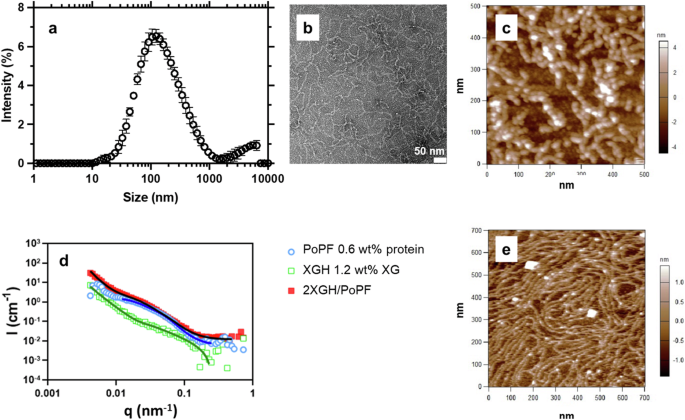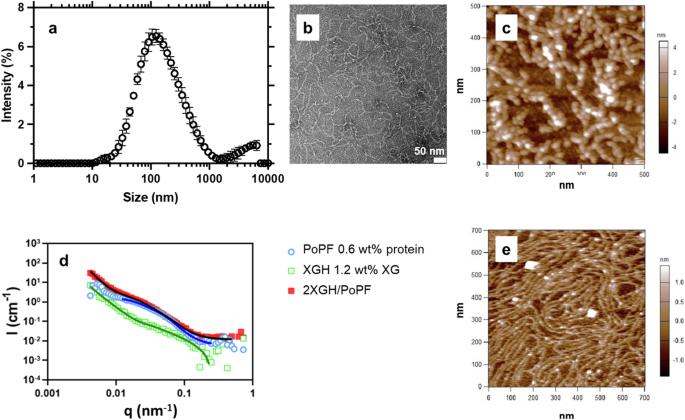Self-assembly of sustainable plant protein protofilaments into a hydrogel for ultra-low friction across length scales
IF 7.5
Q1 MATERIALS SCIENCE, MULTIDISCIPLINARY
引用次数: 0
Abstract
Designing plant protein-based aqueous lubricants can be of great potential to achieve sustainability objectives by capitalising on inherent functional groups without using synthetic chemicals; however, such a concept remains in its infancy. Here, we engineer a class of self-assembled sustainable materials by using plant-based protofilaments and their assembly within a biopolymeric hydrogel giving rise to a distinct patchy architecture. By leveraging physical interactions, this material offers superlubricity with friction coefficients of 0.004-to-0.00007 achieved under moderate-to-high (102-to-103 kPa) contact pressures. Multiscale experimental measurements combined with molecular dynamics simulations reveal an intriguing synergistic mechanism behind such ultra-low friction - where the uncoated areas of the protofilaments glue to the surface by hydrophobic interactions, whilst the hydrogel offers the hydration lubrication. The current approach establishes a robust platform towards unlocking an untapped potential of using plant protein-based building blocks across diverse applications where achieving superlubricity and environmental sustainability are key performance indicators. Superlubricity is important for energy and biomedical applications but typical building blocks are limited to synthetically-sourced polymeric materials. Here, self-assembly of plant-based protofilaments in biopolymeric hydrogels were engineered offering superlubricity performance.


将可持续植物蛋白原丝自组装成水凝胶,实现跨长度尺度的超低摩擦力
设计基于植物蛋白的水性润滑剂具有很大的潜力,可以在不使用合成化学品的情况下利用固有的功能基团实现可持续发展的目标。在这里,我们利用基于植物的原丝及其在生物聚合物水凝胶中的组装,设计了一类自组装可持续材料,从而产生了一种独特的斑块结构。通过利用物理相互作用,这种材料具有超强的润滑性,在中高压力(102-103 kPa)接触下摩擦系数可达 0.004-0.00007 之间。多尺度实验测量与分子动力学模拟相结合,揭示了这种超低摩擦力背后的一种有趣的协同机制--原丝的未涂层区域通过疏水相互作用粘附到表面,而水凝胶则提供水合润滑。目前的方法建立了一个稳健的平台,可以利用基于植物蛋白的构筑模块在各种应用中发掘尚未开发的潜力,在这些应用中,实现超润滑性和环境可持续性是关键的性能指标。超润滑性对于能源和生物医学应用非常重要,但典型的构筑模块仅限于合成来源的聚合物材料。在这里,我们在生物聚合物水凝胶中设计了具有超润滑性能的植物原丝自组装。
本文章由计算机程序翻译,如有差异,请以英文原文为准。
求助全文
约1分钟内获得全文
求助全文
来源期刊

Communications Materials
MATERIALS SCIENCE, MULTIDISCIPLINARY-
CiteScore
12.10
自引率
1.30%
发文量
85
审稿时长
17 weeks
期刊介绍:
Communications Materials, a selective open access journal within Nature Portfolio, is dedicated to publishing top-tier research, reviews, and commentary across all facets of materials science. The journal showcases significant advancements in specialized research areas, encompassing both fundamental and applied studies. Serving as an open access option for materials sciences, Communications Materials applies less stringent criteria for impact and significance compared to Nature-branded journals, including Nature Communications.
 求助内容:
求助内容: 应助结果提醒方式:
应助结果提醒方式:


